The Epoch System 10: The Pong to End All Pongs
I told you I was done with Pong consoles, but a spectre has continued to haunt Nicole Express in our Epoch series– the spectre of Pong. Specifically, the Epoch System 10. This 1977 color Pong powerhouse led directly to the µPD777, which led to the Cassette Vision, which in turn led to the Super Cassette Vision. And unlike Epoch’s first console, the Electrotennis (based off of Magnavox Odyssey), or their licensed Breakout game, Epoch did this one in house. How did their first grasp at unique TV game hardware go?
Bundle it up
I don’t just have an Epoch System 10 to show you today, though– I have the full bundle. Which had its own box that contains the other boxes inside of it. Why is only the right half of the box shown in this image? Well, the left half’s not doing so well. It is nearly fifty years old, though.
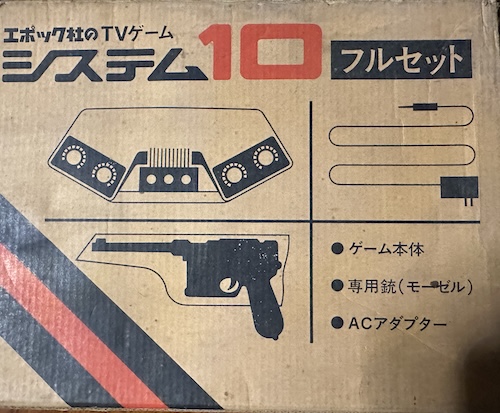
This includes both the system and the compatible lightgun, modeled after a Mauser. But you knew that already; it was in my Cassette Vision games post. And that post is pretty relevant, so I recommend you read it, or at least the part on Big Sports 12.
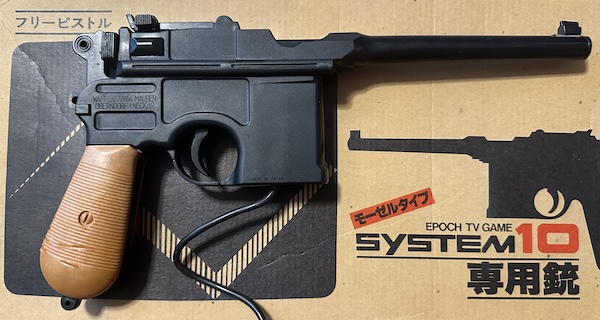
The box for the console itself shows various sports, and promises ten different games, in color. In my case the AC adapter for the console was haphazardly thrown in the box; I’m not sure if it originally had a third cardboard box inside the bundle box.
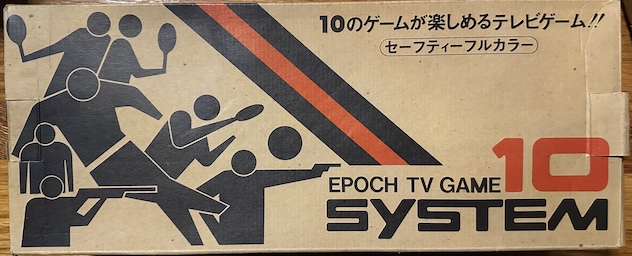
And now we can finally get to the console itself. Its classy beige and brown color scheme reveals that this is the first model; at some point Epoch replaced it with the “M2” made with orange plastic instead. I think this looks better, and as far as I know there are no real functionality differences, so I’m happy to have this version.
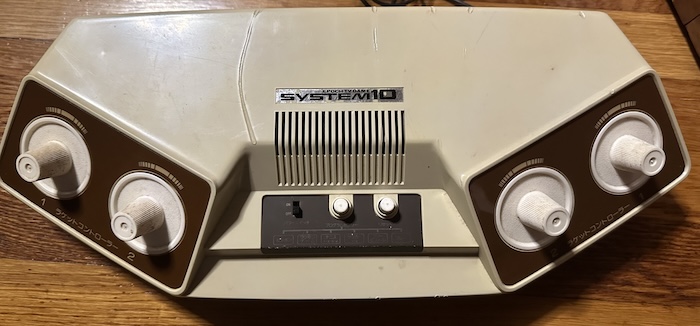
The text under the control buttons is very hard to read (in fact, it’s easier to read in this photo than in person), but the important part to recognize is that these are both instantaneous buttons; no switches or sliders to choose your game here. Which is more technologically advanced, but also a bit of a shame, I’ve never been a huge fan of these. But once you get as many as ten games I guess you don’t have a choice, do they even made knobs that big?
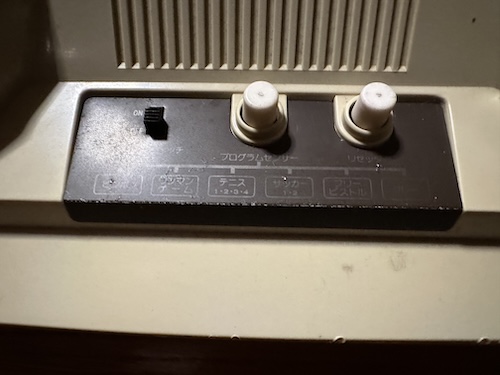
Here are the games:
- Ping-pong
- One-man Game
- Tennis 1·2·3·4
- Soccer 1·2
- Free Pistol
- Clay
That is to say, the usual array of Pong variants and a few very basic shooting games, as you’d expect from a machine like this. It’s all a bit rote at this point, isn’t it?
Enough about that. Let’s crack this baby open. Despite seemingly to have many holes on the back, most are just blind holes that are stalks to hold the PCB in place and don’t have screws; only four screws hold the two halves together, hiding a PCB shield so thick that you’d almost think the FCC was regulating this thing. What’s underneath?
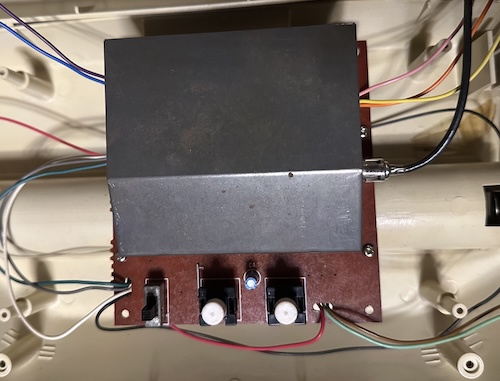
Internal hardware
Early Pong consoles can be distinguished by the number of joysticks. Magnavox Odyssey-style games need three for each player: x-motion, y-motion, and ball “English”. (For more on that, see the Odyssey 100 post) Atari-style Home Pong and AY-3-8500-type games have one potentiometer per player, for up and down motion. The last gasp of Pong games, like the AY-3-8600 series used in the TV Jack 5000, tend to have chintzy non-centering joysticks for x and y-motion.
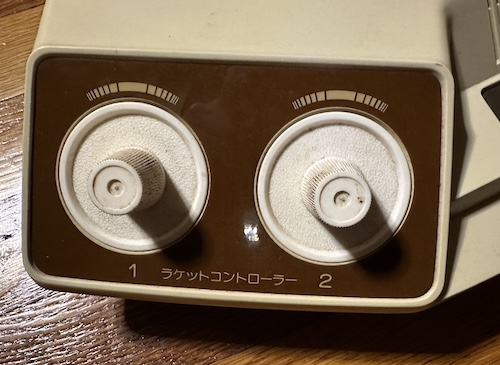
The Epoch System 10 has two potentiometers for each player, so we know it can’t be based on Magnavox’s technology– that would’ve required an “English” potentiometer. And we also know it’s not an AY-3-8500, because that would only have one. In fact, this one’s unique.
Masayuki Horie’s interview translated by Shmuplations provides some clues here on how the System 10 worked internally.
…The System 10 used hardwired logic chips, not a microprocessor; it was just one big integrated circuit made from TTL chips. When you were making a new game, you didn’t compile a program, you engineered a circuit, which was extremely challenging.
The reference to TTL chips is interesting, because the System 10 does in fact have a single chip inside. Well, it has a tiny µPD4049C chip, but the µPD770 is clearly the star here, and no TTL logic chips are in sight. I’m not sure what the 4049C is; at least one data sheet claims it’s a small RAM (and we similarly saw a small RAM in the contemporary Pinball Breakaway), but others say it’s a hex buffer for going between TTL and CMOS-level logic.
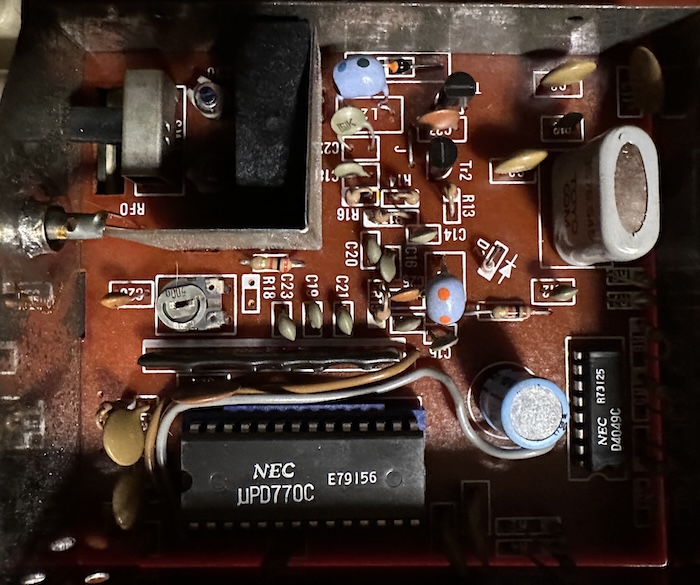
I wonder if what Masayuki Horie remembers seeing was some kind of early prototype system. Early Pong arcade titles like, er, Pong from Atari were made up entirely of discrete logic chips like counters and gates– check out Atari’s schematic if you don’t believe me. It’s easy to imagine Epoch’s engineers or their subcontractors coming in with a few large boards like this at a stage where designers like Horie could give their input more easily, before things started getting more locked down. But that’s speculation.
I think it’s fairly safe to assume that the µPD770 is some form of integrated gate array, and that the System 10 is what I’d call a “digital” Pong game. Binary counters triggered off of the single 3.57945MHz oscillator (why yes, that is the NTSC colorburst frequency) determine pretty much all the game state without any microprocessor intermediary. Nothing out of the ordinary for 1977.
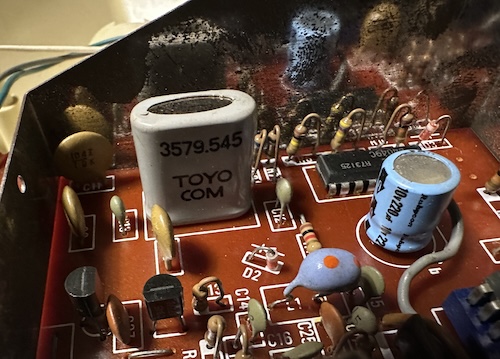
Games
Look, I mean… it’s a Pong console. I don’t know what you want me to say. But hey, let’s break out the fifty-year-old AC adapter (this thing takes batteries too, but thank gods there weren’t fifty-year-old batteries in there) and give this thing a whirl. I was even able to get a good picture from the Akai Color TV Tuner that failed me in the TV Jack 5000 post. I’m not sure if the colors should be that washed out, though. This thing might need some maintenance.

But first off, what are the ten systems? It turns out the box lists them for us.
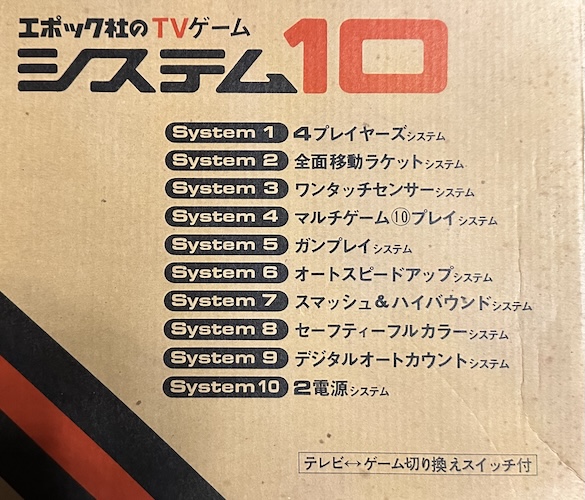
- System 1 - 4 Players System
- System 2 - Full Screen Movement System
- System 3 - One Touch Sensor System
- System 4 - Multi-Game 10 Play System
- System 5 - Gunplay System
- System 6 - Auto Speed Up System
- System 7 - Smash & High Bound System
- System 8 - Safety Full Color System
- System 9 - Digital Auto Count System
- System 10 - 2 Power Sources System
Yes, I’m not quite sure why having both battery power and an AC adapter count as a “system” either. I’m also not sure what “Safety Full Color” is, but it’s on the box elsewhere, so I guess it was very important. Were Nintendo Color TV Game players exposing themselves to high risk?

The Pong variants are pretty much what you’d expect. Paddles (full potentiometers, of course), which might be able to move in both the x direction and the y direction, or just the x direction. As a pre-microcontroller machine, everything is running in real time, so a dirty potentiometer can be re-read each line in a different location.

You might wonder what the four player support is. Well, you could have the whole family crowd around the System 10 and share paddles, but just as with the Magnavox machines, what four-player meant in these days was that there were four moving objects on screen. That is to say, in these modes each paddle moves in the x direction only.
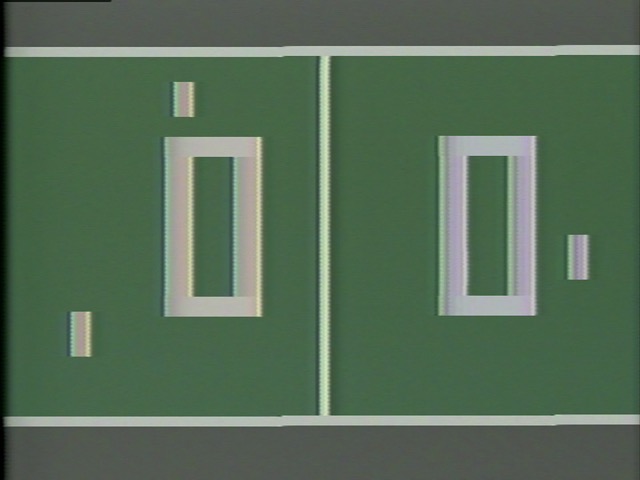
The one-man game is the same handball or “practice” game that’s frequently seen on AY-3-8500 and other systems. At least this system gives everything in color, without the need for an additional colorizer chip.
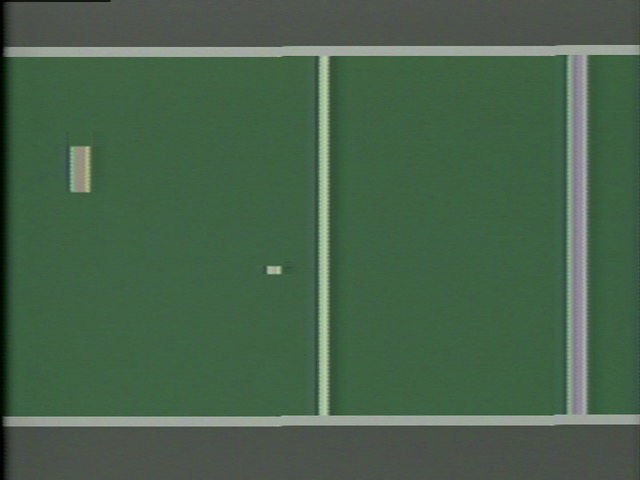
And of course the gun games are all presented in stark white on black, the better for the light gun to see with. I’m going to blame my inability to play these well on the Akai. I think it might be processing the image signal. That’s gotta be it.

Aftermath
Tetsuji Ogawa notes that the Super 10 project was the source of the µPD777 series– the Super 10 being a successor of the System 10. However, I’d be surprised if much of the internal logic of the digital Pong made its way into the 777; not only was it seemingly a different team, but also there doesn’t seem to be much similarity in the few unique elements. Compare the tiny score numbers in Big Sports 12 to the full-screen numbers in System 10.
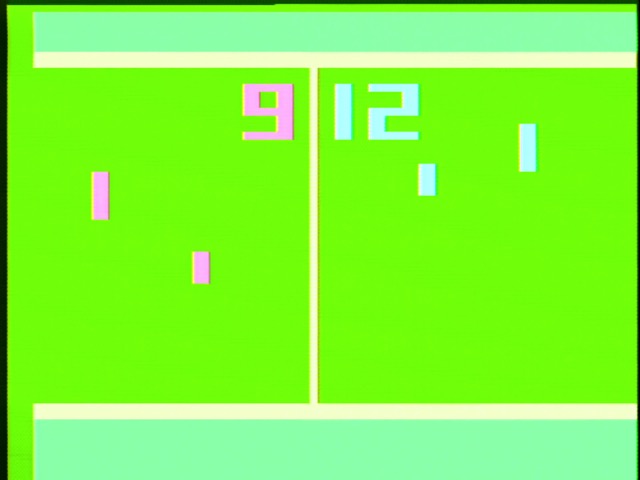
This firmware was delivered to Epoch in March of 1978 (source here), but it looks like they decided only to proceed with the TV Baseball game on the same 777-hardware (in fact, Super 10 was µPD777, and TV Baseball’s chip µPD778). The Super 10 firmware finally showed up in Big Sports 12 in 1982; which is probably why that game felt like such a throwback even compared to the other Cassette Vision titles.
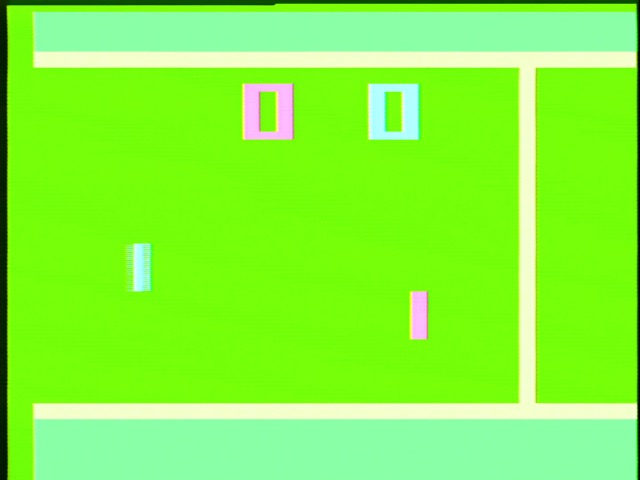
Honestly, I can see why the Super 10 never went on store shelves. Not only were Pong consoles getting old fast, but really it doesn’t offer that much over the earlier version, though I suppose some people might prefer the smaller AY-3-8500-style numerals to the screen-filling ones. TV Baseball meanwhile offered a whole different game to try out. And by 1982? Downright archaic.
A series on: Pong consoles
Game consoles that do only one thing. Do they do it well? Eh, debatable.
- First is the Worst: Nintendo's Color TV Game 6 & 15 — Nintendo's take on the Pong console. Surprisingly not great; should they just give up on this whole console thing?
- The Bare Minimum Video Game: The Odyssey 100 — Calling the Magnavox Odyssey 100 a Pong console may be a violation of court order, so be careful-- this hardware's origins predate Pong itself.
- Composite Mod from Scratch: Atari's Pong Sports IV — People make a lot of allegations about life at Atari in the 1970s, but one thing is clear: their Pong consoles sure are colorful. Psychedelic?
- The Last of the First: The Magnavox Odyssey 500 — Ending the Pong console series with a look at the very last console based on the original Magnavox Odyssey. Did you get actual pixel graphics in my Pong?
- The Epoch System 10: The Pong to End All Pongs — One more Pong console to round out 2024. The Epoch System 10 was Epoch's first time making a console with their own R&D, and led directly to their Cassette Vision console. Is it worth the time?
